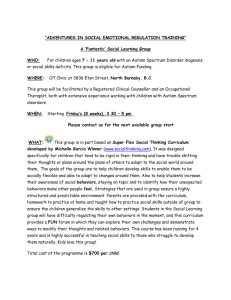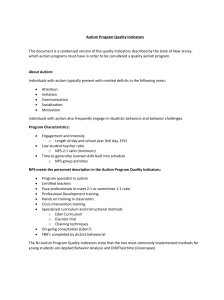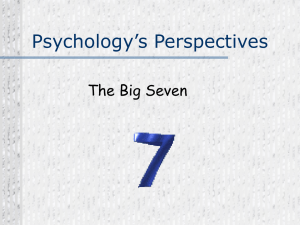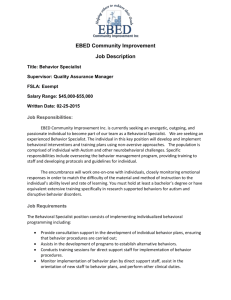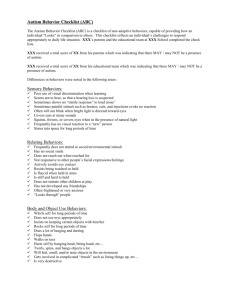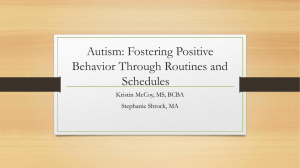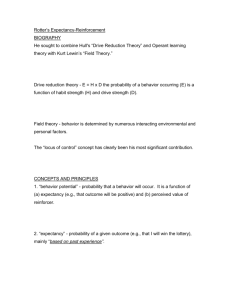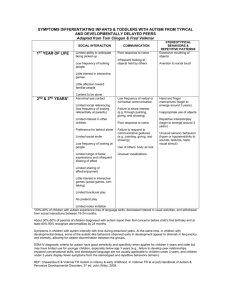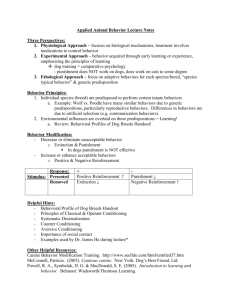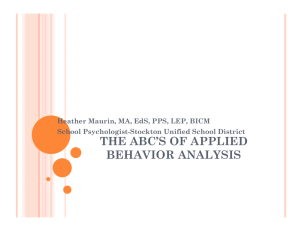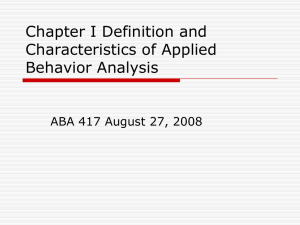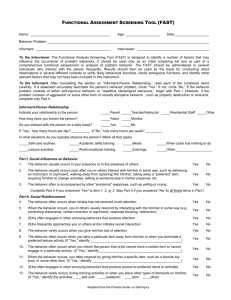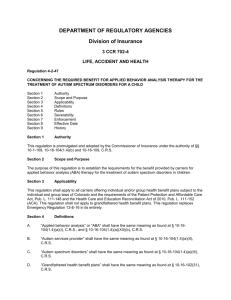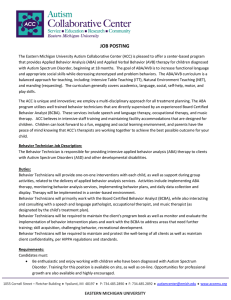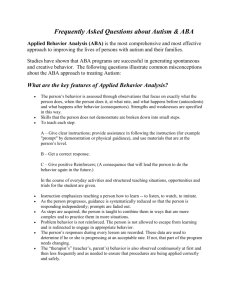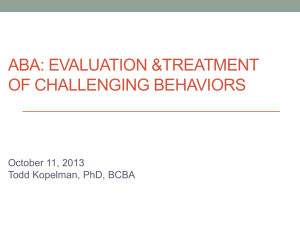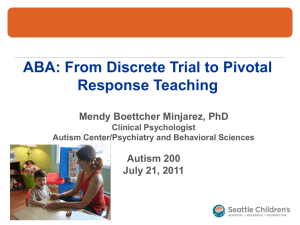Applied Behavior Analysis Curriculum Model
advertisement
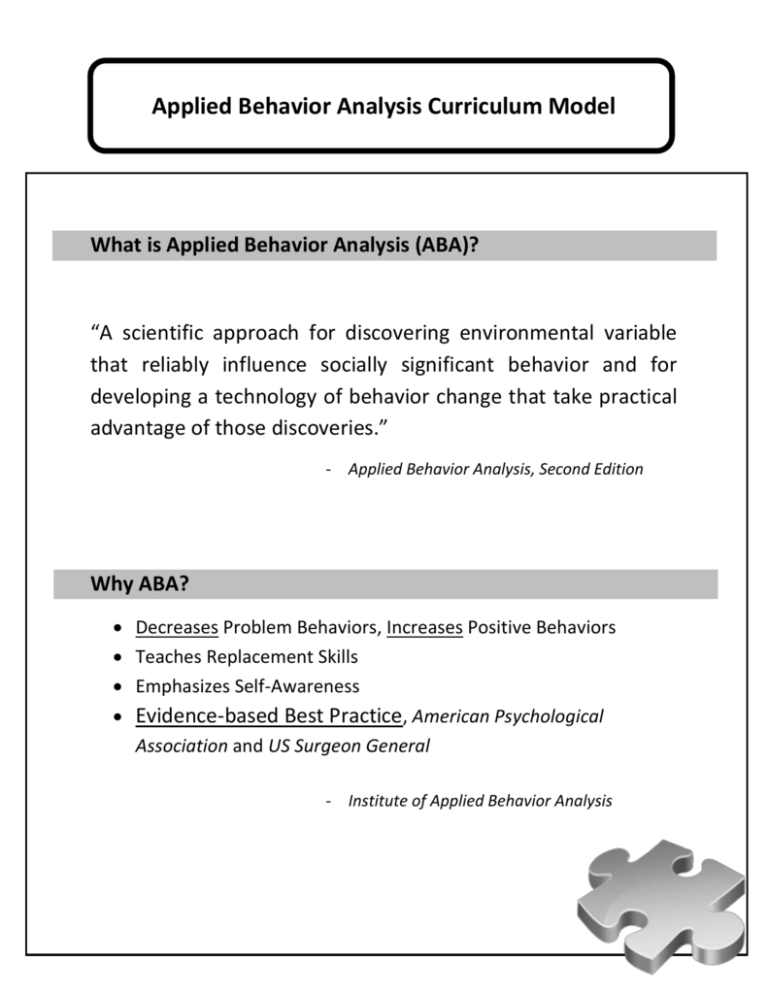
Applied Behavior Analysis Curriculum Model What is Applied Behavior Analysis (ABA)? “A scientific approach for discovering environmental variable that reliably influence socially significant behavior and for developing a technology of behavior change that take practical advantage of those discoveries.” - Applied Behavior Analysis, Second Edition Why ABA? Decreases Problem Behaviors, Increases Positive Behaviors Teaches Replacement Skills Emphasizes Self-Awareness Evidence-based Best Practice, American Psychological Association and US Surgeon General - Institute of Applied Behavior Analysis ABA Therapy Curriculum Outline Discrete Trail Training Discrete Trial Training utilizes a one-on-one teaching method. Repetition is a key component; which is important in order to master skills and establish long term memory. Desired behaviors are condensed into multiple, simple steps and each step is then prompted and positive reinforcement is utilized. Natural Environment Training This training model focuses on teaching children in the environment they will use their skills. Client initiates activities, and specialist follows their lead because it maximized reinforcement. It also helps facilitate naturally occurring opportunities, which are a key component used to teach language. Verbal Behavior Therapy Therapy is one-on-one and focuses on helping clients relate words to communication and request, instead of as labels. Nonverbal communication is a key component of therapy implementation in the beginning stages. Prompts are readily provided, when needed, by specialist to ensure “errorless” learning. Verbal Behavior Therapy is typically implemented 1-3 hours per week, and in beneficial for all age groups. Pivotal Response Training Pivotal Response Training is child initiated and play based, with goals in areas of language, communication, positive social behaviors, and decreased selfstimulatory behaviors. Motivation and natural reinforcement are key components. This method works best with preschoolers, and elementary aged children. Early Start Denver Model This program model was developed for toddlers, aged 12-48 months with Autistic Disorder. Its development was based off of Pivotal Response Training. The program can be implemented in a clinical setting, or in the child’s home. The model establishes thorough parental involvement and focuses on positive language and communication development. Pediatrics published a study showing children who received ESDM therapy for 20 hours a week (5 hours via parent, and 15 hours via specialist) over a two year time span had better improvements, and less symptoms of Autism than their peer receive other common forms of referred interventions. Natural language Paradigm Natural Language Paradigm emphasizes child initiative, and uses deliberate arrangements of the environment to increase opportunities to use language and natural reinforces. - Autism Speaks Autism Treatment Network
